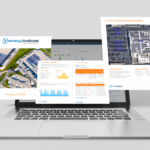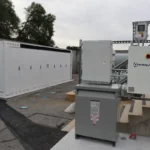I was a panelist on a workshop at the Intersolar conference last month on the topic of ‘software tools and techniques to stay competitive in the solar industry. The audience was mostly made up of residential solar contractors. Before the panel got underway the moderator polled the audience to see how many of them used Green Button Data when analyzing and proposing their projects? Only a few hands in the room went up.
While informal, the poll results are likely representative of Green Button Data use in the residential market. In fact many residential installers may not even know what Green Button Data (aka: interval meter data) is. But this is clearly not the case in the commercial and industrial (C&I) segment, where many of the leading solar developers regularly work with interval meter data when analyzing their projects. The same is true for energy service companies (ESCO’s), energy auditors and engineers who have been using raw meter data files for years in their analysis. These types of users routinely capitalize on the many advantages that Green Button Data offers. They leverage raw data to perform the highest level of analysis on behalf of their customer. Some sophisticated residential players are using it as well to get a competitive edge; more will likely soon follow.
The Value of Interval Data in Solar Project Analysis
Today we are publishing a resource guide entitled: The Value of Interval Data in Solar PV Project Analysis, which explores this topic in depth. In the guide we cover: what interval data is, who makes it available, why it’s valuable for analyzing and proposing solar projects, and how to best use and interpret it.
This guide is meant to be practical, not academic. We review a number of everyday applications, which show the value of using interval data when developing and proposing solar projects. For example, using interval data rather than monthly summary data enables a developer to precisely compare the dollar savings of all eligible utility rate options for their customer. Another is the ability to determine the optimal solar system size for dollar savings for a customer on a time-of-use based rate. In commercial applications, interval data allows for an ethical simulation of the reduction of demand charges from solar PV, which can make up half the utility bill.
Today’s Luxury is Tomorrow’s Necessity
In certain markets, selling solar may feel like shooting fish in a barrel right now. It’s easy dismiss interval data as a luxury item. But in the not-too-distant future we believe that perception will change. Even in residential markets, we think interval data will become essential. It will become a prerequisite to accurately analyze the economics of a project. In some cases you literally may not be able to propose and close a deal without it.
Many of the next generation net metering frameworks are proposing to value kilowatt-hour (kWh) exports to the grid at less than the full retail rate. Having interval data will be necessary to know when the customer uses, which will affect how much solar gets exported. This of course will determine the dollar savings and economics of the project. In markets like California and Hawaii this future could be right around the corner. More states will likely follow. Of course also on the near horizon is the potential sunsetting of the 30% federal investment tax credit, which is scheduled to ratchet down to 10% at the end of 2016. To make deals pencil in the future, developers will need to extract every dollar of energy savings possible from their projects. Leveraging interval data to find the best time-of-use rate option, and optimize the design of the system will be a necessity, not a luxury.
If the solar industry consolidates, which many analysts are predicting, developers and installers will need to be sophisticated just to be competitive. Only the strong will survive. A couple years from now my guess is that if a moderator asks a room full of solar installers if they’re using Green Button Data, the vast majority of hands in the room will go up. The ones that don’t won’t likely be there or be in business anymore.



